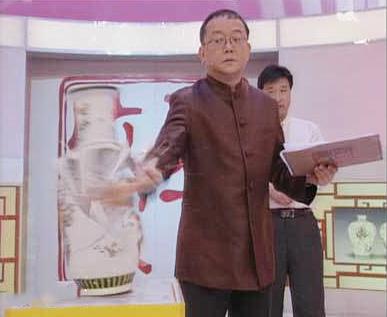六级翻译里面常考的节日(四六级传统习俗翻译术语)

Chinese calendar, a lunisolar calendar阴阳合历, is formed on the movement of the moon. It defines界定 Chinese 24 solar terms节气, traditional holidays and helps to choose a lucky day选定良辰吉日 before important activities such as
marriage proposal订婚,
wedding结婚,
praying for pregnancy求子,
traveling出行.
闰年
Leap Years
The Chinese calendar features 12 months有12个月份. However, an extra month is inserted in the calendar when a leap year occurs每逢闰年时要添加一个月. Therefore, leap years in the Chinese calendar have 13 months, unlike leap years in the Gregorian calendar公历 in which an extra day is included添加一天. A leap month is added to 添加the Chinese calendar approximately every three years (7 times in 19 years). The name of the leap month is the same as the previous lunar month闰月的名称与之前的阴历月份名称相同. A leap year in the Chinese calendar does not necessarily不一定 fall at the same time a leap year occurs in the Gregorian calendar.
The Chinese calendar's origins can be traced as far back as追溯到 the 14th century BCE. The Shang oracle bones甲骨文 give evidence of a lunisolar calendar which has been much modified but persists to this day 延续至今. It is believed that the Emperor Huangdi (Huang Ti or Huang Di)黄帝 introduced the calendar between 3000 and 2600 BCE, or around 2637 BCE.
黄历,又称老黄历、皇历,是在中国农历基础上产生出来的,带有每日吉凶宜忌的一种万年历。黄历相传是由轩辕黄帝创制,故称为黄历。黄历主要内容为二十四节气,每天的宜忌、干支、值神、星宿、月相、吉神凶煞等。
黄历是古时帝王遵循的一个行为规范的书籍,并由钦天监计算颁订,因此也称皇历;这里面不但包括了天文气象、时令季节而且还包含了人民在日常生活中要遵守的一些禁忌,其内容指导中国劳动农民耕种时机,故又称农民历;中国民间俗称为通书;但因通书的“书”字跟“输”字同音,因避忌故又名通胜。
在现代,黄历的主要内容包括:公历、农历和干支历三套历法,二十四节气与礼拜天(星期)、宜忌、冲煞、方位、流年、太岁、三元九运、玄空九星等等。
China resisted the Gregorian calendar抵制使用公历 until 1912 but it was not widely used throughout the country until the Communist victory in 1949. This widespread change occurred on October 1, 1949, when Mao Zedong, who led the People's Republic of China, ordered that the year should be in accord with保持一致 the Gregorian calendar.
天干地支
Heavenly Stems & Earthly Branches
Although China has adopted the Gregorian calendar in common with most other countries in the world for official and business purposes, the traditional Chinese calendar continues to define the dates of festivals界定节日 and is used for horoscopes占卜. The calendar has a very long history going back to the Xia追溯到 (21st century BC - 16th century BC) and Shang Dynasty (16th century BC - 11th century BC). It is based on a unique combination of astronomy and geography through observation and exploration. It is also referred to as the Lunar, Yin, Xia or the old Chinese calendar.阴历、夏历或老黄历
Following its creation in the Xia Dynasty, succeeding reigns continued to use the calendar but modified it from time to time. The Han Dynasty rulers instituted the Taichu calendar, while during Tang Dynasty the Huangji calendar was introduced and it was adopted by Japan, Korea and Vietnam. With the founding of the Republic of China in 1912, the Gregorian calendar was brought into use开始使用公历. Although ethnic groups such as Tibet and Dai have their own calendars, in essence本质上来讲they resemble that of the Han people与汉族的很相似. Islam reckons its own religion festivals according to the Islamic Calendar.
The calendar has links with natural sciences such as agriculture and astronomy天文学,solar terms节气, the four seasons and traditional festivals such as the Spring Festival. There are links also with the 'Five Elements'五行 of which the ancient Chinese believed the physical universe物质世界 to be composed namely, metal, wood, water, fire and earth金木水火土. Finally, of course, is Chinese Zodiac属相 - the symbolic animals生肖associated with each year on a 12-year cycle.
Rules for Calculation
Each time the moon moves into line with the earth and the sun a new month begins and this is called 'Chu Yi'初一 or 'Shuo Ri' (the first day of a lunar month)朔日. The longest day of a year or Summer Solstice夏至 falls on在哪一天 the 21st or 22nd of June, and the shortest day is the Winter Solstice冬至 on either December 21, 22, or 23. Using these two annual events the year was divided into in 24 equal parts, each forming the 24 solar terms. The month with its first day nearest the Beginning of Spring (the first solar term)立春 is the first lunar month, and on that day the Spring Festival is held春节 and this varies不固定,介于之间 between January 20th and February 20th.
In China, there are public holidays公休假日on 7 legal festivals法定节日 in a year, namely New Year's Day元旦, Chinese New Year (Spring Festival)春节, Qingming Festival清明节, May Day五一劳动节, Dragon Boat Festival端午节, Mid-Autumn Festival端午节, and National Day国庆节.
五四青年节Youth Day
六一儿童节 Children's Day
八一建军节Army Day of the Chinese People's Liberation Army
有半天假Women have half day off on Women's Day.
Young people over 14 years of age have a half day off on Youth Day. Children under 14 years old have a day off on Children's Day.
现役军人Active members of the army have a half-day off on Army Day.
植树节Arbor Day
教师节Teachers' Day

【丘尔教育】
【四六级答疑交流群】
四六级交流、资料分享(备注四六级交流)。群内不定期更新资料,免费名师指点、学长学姐直播答疑。
不要等啦,来撩我吧!
,免责声明:本文仅代表文章作者的个人观点,与本站无关。其原创性、真实性以及文中陈述文字和内容未经本站证实,对本文以及其中全部或者部分内容文字的真实性、完整性和原创性本站不作任何保证或承诺,请读者仅作参考,并自行核实相关内容。文章投诉邮箱:anhduc.ph@yahoo.com






